Danish Lyngdorf Audio does not launch new electronic products very often. It has been four years since we tested the compact TDAI-1120 amplifier. And the top model, the TDAI-3400, is six years old.
But now there is a new mid-range model called the TDAI 2210. And although the family resemblance is clear, several things have been done differently than before.
Like the other two models in the series, the Lyngdorf TDAI-2210 is a matte black metal case in an almost relentlessly simple design. The edges are razor sharp, and the front panel contains just a single knob, while a large display takes up more than half of the front. As before, the control knob is large and heavy and runs on smooth-running ball bearings, a design feature that has been a hallmark of Lyngdorf products since their inception in 1998.
One of the things that sets the Lyngdorf TDAI-2210 apart from previous models is its user-friendliness. This applies to both setup and everyday use.
Instead of an aesthetic but somewhat laborious operation requiring the use of a remote control, you now get a large and stylish colour touch screen. And when you listen to streaming via Tidal, for example, the screen takes on the colour of the cover of the song being played. Sure, it’s a touch of pop, but why shouldn’t high sound quality be pleasing to the eye?
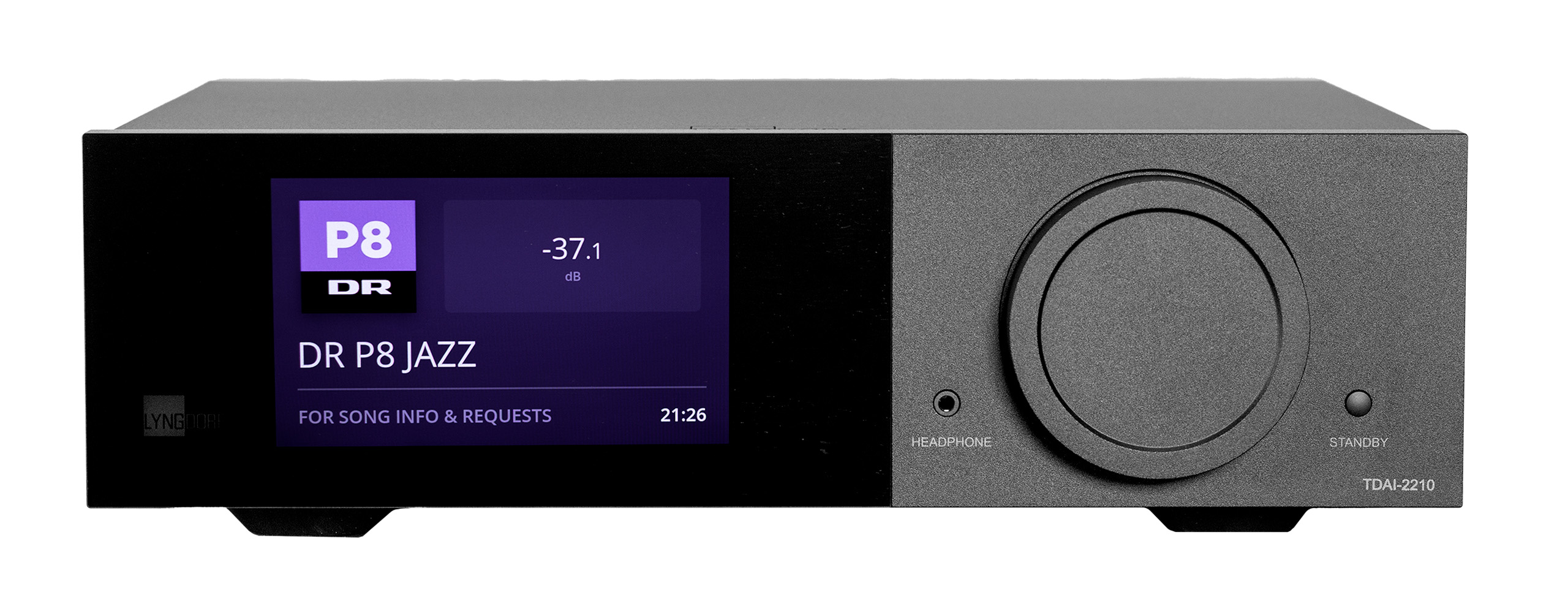
Simplified setup
Where room correction and basic setup of previous models were best performed via a web browser, the process on the TDAI-2210 has been simplified considerably. When the device is started up for the first time and a connection to the internet has been established (only a Wi-Fi code is required), you are guided through the room correction process via the screen.
The setup went smoothly, and the manual was downloaded but never used. It was also not necessary to use a browser for the setup, although this option still exists.
With 2 x 105 watts into eight ohms and 2 x 210 watts into four ohms, the Lyngdorf TDAI-2210 has half the output power of its big brother, the TDAI-3400, but it is still more than adequate for most regular speakers in most regular listening rooms.
Like all Lyngdorf amplifiers, this is a power DAC, where the signal path is fully digital from the input sockets (or streaming) to the output stage, where a low-pass filter converts the pulse-width-modulated bit stream into analogue sound.
Although the amplifier is digital, there are still two analog line inputs. However, there is no turntable input; this can be purchased as a plug-in card. Only the smaller TDAI-1120 comes with RIAA.
In addition to the standard inputs, there are of course connections for wireless and wired networks as well as Bluetooth. There are no multi-room functions, but there is Tidal Connect, internet radio via vTuner, media playback with Roon, and Spotify Connect.
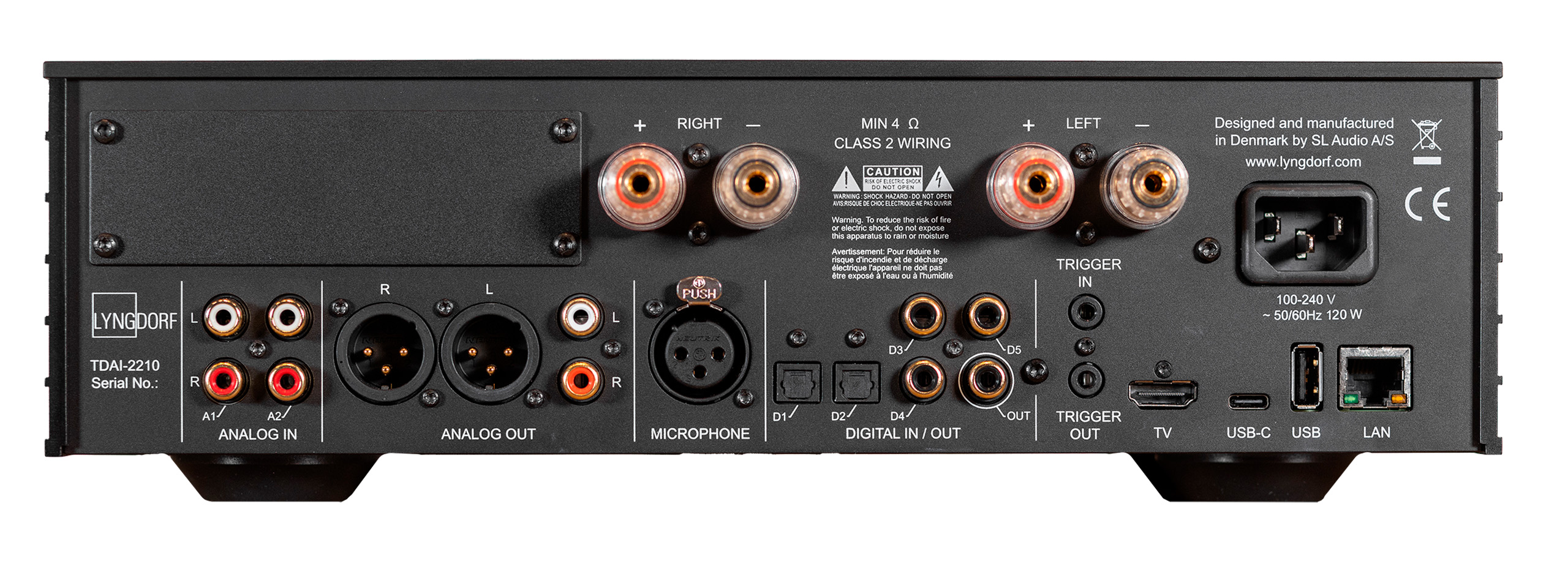
No signature
At Lyngdorf, they are not fans of “sound” or “sound signature”. The TDAI-2210 does not leave any noticeable fingerprint on the sound. Thanks to its built-in room correction, it removes colouration from the sound rather than adding it. To counterbalance this, however, a number of “voicings” have been introduced, such as Music, Relaxed and Action1, so that you can give the bass an extra boost when you open up your home cinema, for example.
Placing speakers and living room furnishings is a difficult combination. Lyngdorf Audio wants to reduce the negative impact of the listening room on the sound.
Negotiating with the room
The weakest link in the hi-fi chain is neither the amplifier nor the loudspeaker, but rather the listening room. A loudspeaker may have perfect frequency response on paper, but sound terrible when placed in your living room.
Room correction is, by its very nature, about correcting the weaknesses that arise when the speaker encounters the real world.
RoomPerfect is not a simple, automatic equaliser that uncritically attempts to force a flat frequency curve over your listening position. That would be a well-intentioned but naive approach.
If the room insists on creating a ““null” at 80 Hz, attempting to simply boost that frequency will only put the amplifier and speaker to work overtime without resulting in any additional punch in the bass. A complete cancellation due to standing waves will still be a cancellation, even if you pour more energy into it.
Instead, RoomPerfect measures the room’s overall response and creates a detailed digital model. Its primary task is to remove the room’s influence on the sound – especially in the problematic low frequencies. It does not, so to speak, correct for the speaker’s characteristics, but for its location.
The system works in two phases: First, it corrects for the frequency response up to 500 Hz, which is the range where the room affects the frequency response the most.
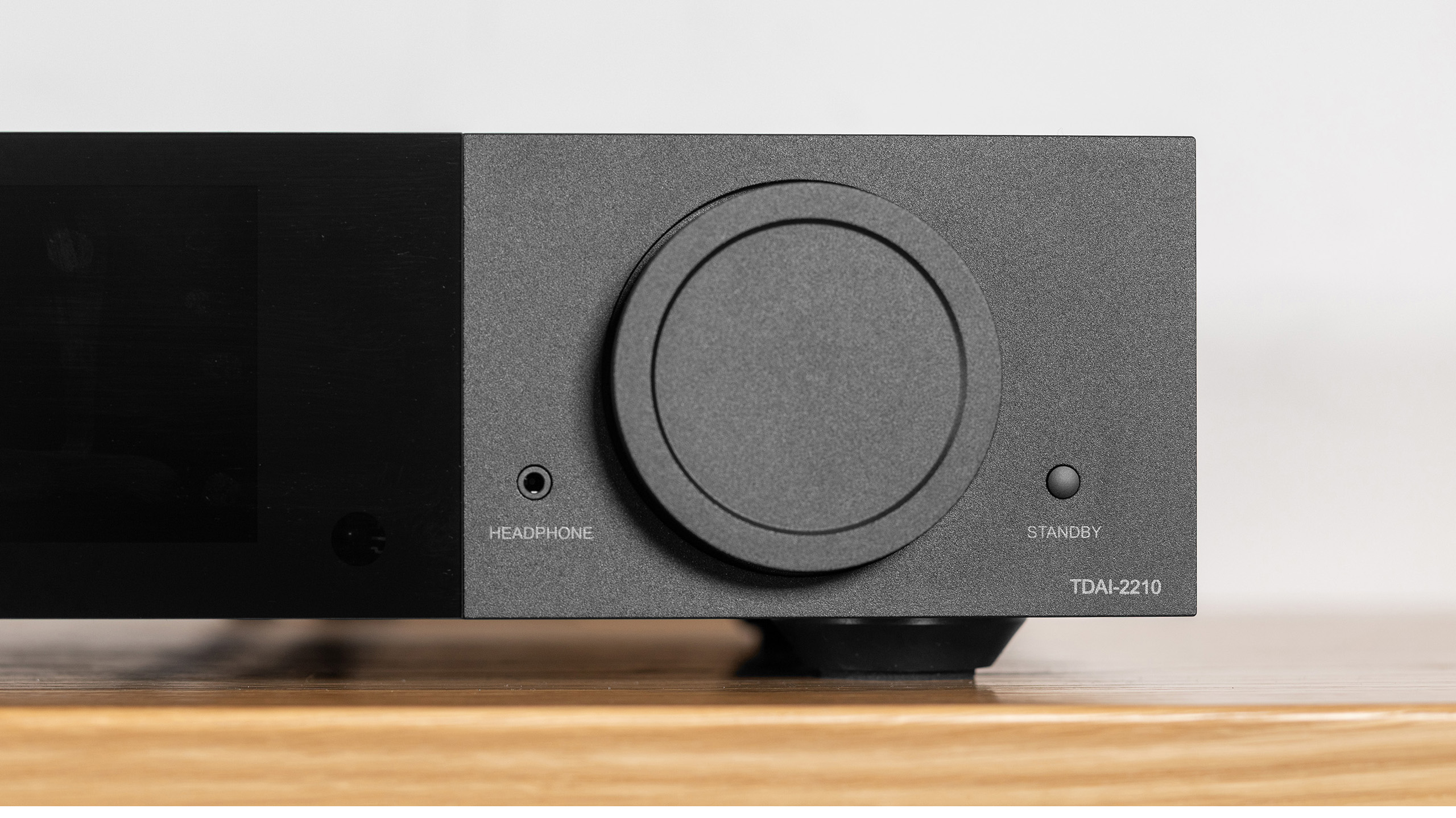
Preserving the character of the speakers
In the rest of the frequency range, the system seeks to correct for the influence of the room, while still preserving the speaker’s original sound character – its voicing. The result should be a sound that is true to the speaker’s design, but free from the influence of the room.
RoomPerfect is almost as old as the Lyngdorf company, which is celebrating its 20th anniversary this year. The system premiered in 2007, while its competitor Audyssey first saw the light of day in home cinema receivers in 2004. The third major room correction system from Dirac was launched in 2011.
All three systems perform the task, and in most cases the result will be better than the same equipment in the same room without room correction. But I have had the best and most convincing experiences with RoomPerfect. This also applies to the Lyngdorf TDAI-2210.
Professional microphone
A microphone is required to capture the sound of your listening room and its weaknesses. With Audyssey and Dirac, the microphone is a small and relatively simple device. But Lyngdorf takes no chances here. Not only does it come with a calibrated measuring microphone with a good old-fashioned analogue XLR connection and a five-metre microphone cable, but also a sturdy, man- height microphone stand.
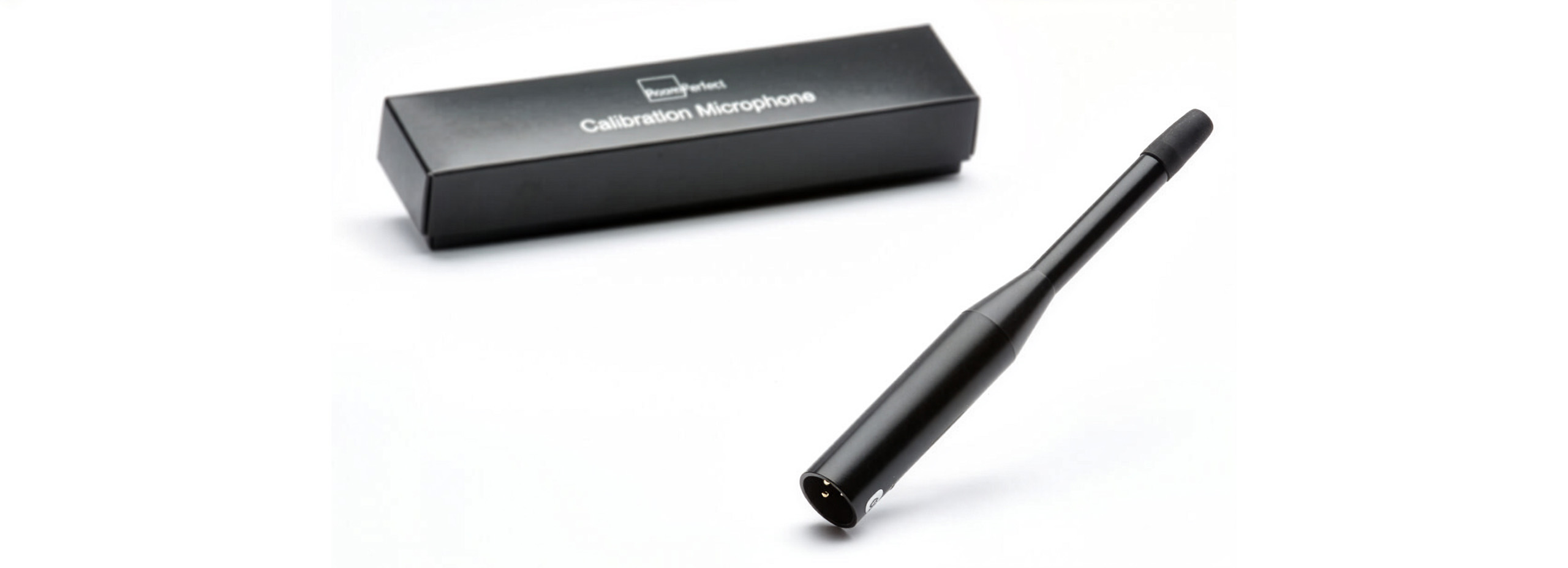
A large part of the small box is taken up by the microphone and tripod, which weigh almost as much as the amplifier itself.
In addition to a measurement at ear level at the listening position, a series of measurements must be taken at random positions in the room. After four or five measurements, each taking a few minutes, the measurement computer is satisfied and the room correction can be calculated.
Measurements are taken with 50 different tones in the range 20-350 Hz and 71 tones in the range from 350 Hz to 20 kHz.
In addition to the optimal room correction (called “Focus”), you can also choose a “Global” setting, which gives a usable result over a larger area around the listening position. The correction can also be turned off, but this makes the sound image seem much less focused and precise. How much room correction helps is most evident when you turn it off!
You can only store one room correction setting at a time in the Lyngdorf TDAI-2210, but this will cover the needs of most users. If you need to switch between two sets of speakers, you can save and retrieve data on a USB stick, so you don’t have to do the same measurement over and over.

More clarity
The Lyngdorf TDAI-2210 was primarily combined with the DALI Rubikore 2 set, which I use as a reference in this price range. The speakers are normally placed on stands in the “proper” position – that is, a short distance from the back wall and more than a metre from the side walls and corners of the living room.
The speakers already sound good, but RoomPerfect figuratively wiped the window to the concert hall a little cleaner, so the acoustic scene is clearer. Interestingly, the bass also became deeper.
However, Lyngdorf actually recommends placing the speakers right up against the back wall – or hanging them on it. The DALI speakers were therefore moved up onto the window sills. It feels completely wrong. But it actually works!
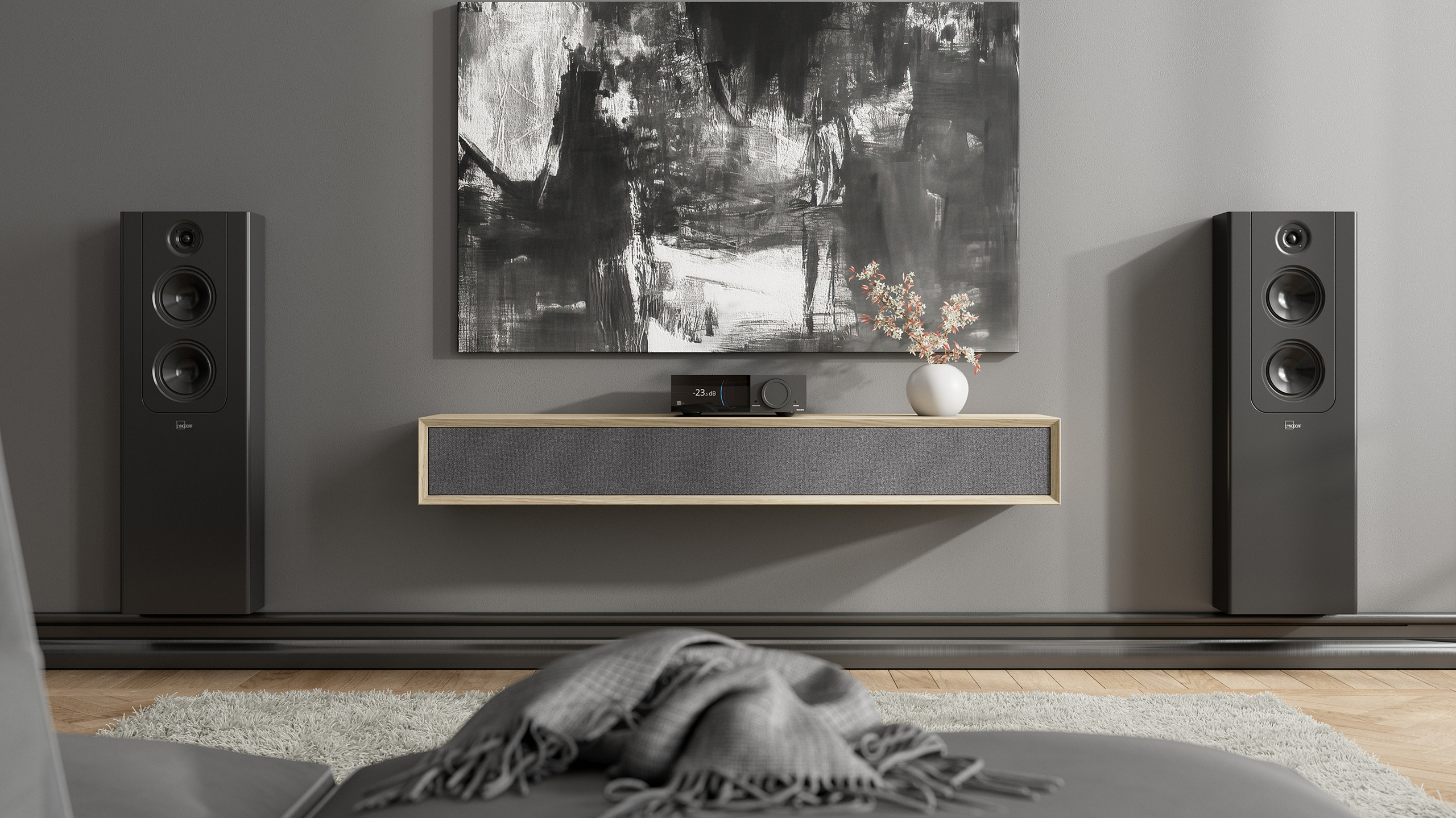
Complete clarity
It is difficult to distinguish between the sound of the amplifier and the sound of RoomPerfect. The former adds virtually no colouration, while the latter effectively removes the colouration we are used to hearing in the listening room. The overall result is pure.
Compared to what I am used to from other amplifiers in the same room and with the same speakers, there is a little more headroom and more space out towards the walls.
On a favourite track like Fishing Junks at Sunset from Concerts in China, you can sense the enormous hall from wall to wall and floor to ceiling. And even more so on Oogway Ascends from Hans Zimmer’s music for Kung Fu Panda.
At the slightly less theatrical end of the spectrum, there is a good rhythmic drive in Afenginn’s Taktstok. And even though the power reserves are not unlimited, I have rarely heard Mike Oldfield’s Five Miles Out sound so dynamic and dry.
Competitors
There are many amplifiers in the borderline between premium and high end. The Hegel H190V and Cyrus 40 AMP are more classic class AB amplifiers. And both have a turntable input to the delight of vinyl enthusiasts. But neither of them has room correction.
In that sense, the Linn Selekt DSM is a more direct competitor, offering both room correction (albeit without actual room measurement) and the full range of streaming options. But with Linn, all features must be purchased as extra modules – and then the price quickly becomes higher than both the TDAI-2210 and TDAI-3400.
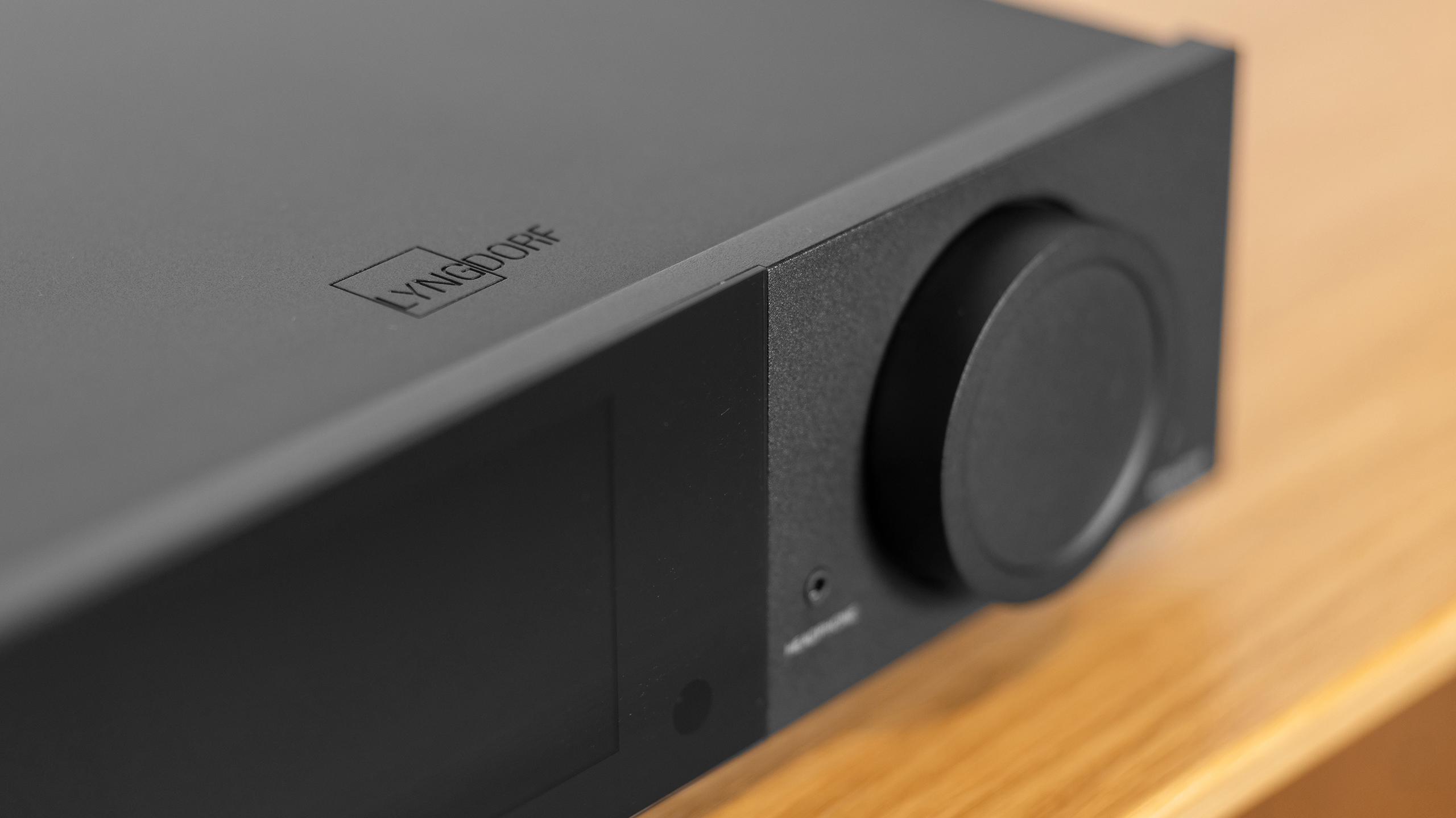
Conclusion
The Lyngdorf TDAI-2210 is an amplifier that stays true to Lyngdorf’s two decades of tradition. Both in its sleek exterior and interior, where it has the typical Lyngdorf sound. Which is none. The fully digital amplifier leaves virtually no fingerprint on the sound. If you want the sound coloured, you have to resort to the EQ curves you can select in the app – or find a signal source that adds the flavour you desire.
The TDAI-2210 costs significantly less than the more powerful TDAI-3400, and in most areas it delivers the same result. Just with an improved user interface. If you can “make do” with 210 watts of output power, the choice is simple.
The big hero of the story, however, is RoomPerfect room correction, which brings out the best in your speakers and frees them from the harmful influence of your living room. Once you’ve turned it on, it’s hard to go back.
In this context, however, it is important to remember that room correction is not the answer to all problems in the listening room. If your living room echoes like a church due to hard, unabsorbed surfaces, no amount of digital correction can make the reverberation disappear.

We think
Ample raw power for most situations. Setup and user interface have been significantly improved. RoomPerfect remains the best room correction you can buy. The price is just right. A turntable amplifier must be purchased separately. If you prefer the sound of a warm and charming class AB amplifier, this is not the solution for you.
3999 €
Specifications
- Output power: 2 x 105 W into 8 ohms / 2 x 210 W into 4 ohms, digital
- Digital inputs: 3 x coaxial (RCA), 2 x optical (TOSLINK), Ethernet, 2 x USB-A, USB-C, HDMI eARC. 12V trigger.
- Analog inputs: 2 x line in (stereo RCA), microphone input for room correction. Can be expanded with analogue module with phono amplifier.
- Wireless: Wi-Fi (802.11ac), AirPlay 2, Bluetooth 4.2, Spotify Connect, Tidal Connect, vTuner, Roon
- Outputs: 1 set of speakers (banana/screw terminals), pre out (stereo RCA), balanced (XLR), headphones (3.5 mm stereo mini jack), 12V trigger
- Resolution: 24 bit/96 kHz (optical), 24 bit/192 kHz (coaxial/HDMI/USB)
- Operation: Lyngdorf app, remote, web interface
- Other: Lyngdorf RoomPerfect room correction. Microphone with stand(!) included. Can be expanded with digital module with 3 x HDMI or analogue module with phono, 2x line in + 1x balanced.
- Dimensions and weight: 32 x 10.2 x 30 cm / 4.7 kg
- Finish: Black anodised aluminium
- Web: lyngdorf.com
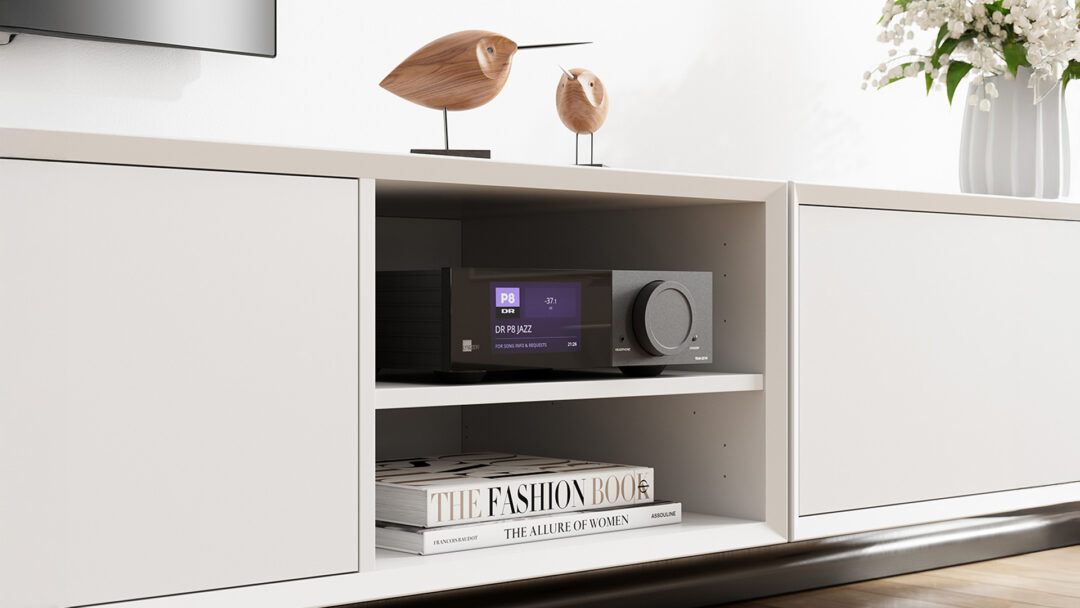

Pingback: TDAI-2210 impresses in new review from Lyd og Billede - Lyngdorf Audio